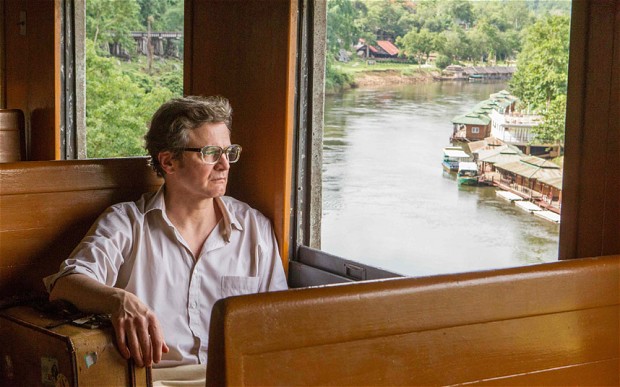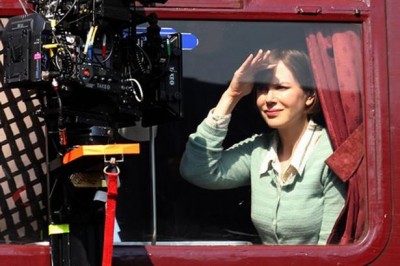
The Railway Man — a film review by Gary Chew
Anti-war films are usually not much in vogue. Glorified violence is big on the big screen. That makes “The Railway Man” stand out, and tall. It’s a new movie that stars Colin Firth and Nicole Kidman.
Anti-war movies stay with me better than any kind. “Paths of Glory” is the classic. Thinking about Dalton Trumbo’s startling “Johnny Got His Gun” still brings shivers. More recently, “In The Valley of Elah” left a strong impression.
 In an almost quiet yet deliberate way “The Railway Man” speaks a similar message about a young man in the British military who, along with thousands of other soldiers, is held by the Japanese as slave labor during WWII to build the Burma Railway that connected Bangkok with Rangoon. The rail system is also known as the Death Railway. It’s from Eric Lomax’s award-winning autobiography of the same title that the film is taken.
In an almost quiet yet deliberate way “The Railway Man” speaks a similar message about a young man in the British military who, along with thousands of other soldiers, is held by the Japanese as slave labor during WWII to build the Burma Railway that connected Bangkok with Rangoon. The rail system is also known as the Death Railway. It’s from Eric Lomax’s award-winning autobiography of the same title that the film is taken.
Firth plays Lomax and Kidman plays his wife Patti, a former nurse from Canada who’s come to live in England.
A visually clever part of “The Railway Man” is the casting of the two actors who play younger versions of the main characters done (as older) by Firth and Hiroyuki Sanada. The Japanese actor plays the real life character, Takashi Nagase, who inflicts great pain on British prisoners of war. The resemblances between each character are readily believable — from young men to middle-aged men. Jeremy Irvine, who was cast as the young Lomax, has the same speech patterns as well as the same facial and body language that Firth is known for … and does in the older characterization of the role. Irvine effectively mimics Firth’s physical style of acting.
 Kidman’s character is one of restraint and loyalty. Patti is a quiet character, much like most of the movie.
Kidman’s character is one of restraint and loyalty. Patti is a quiet character, much like most of the movie.
But “brutal” is the mildest word that can be used to describe how many Allied personnel held in captivity by the Japanese were treated. Although the film moves at its deliberative pace, flashing forward and back (sometimes to confusion), there’s plenty of violence, if that’s why you go to movies. But there is no glorification of the torture and brutality — and surely, as “The Railway Man” wants you to know most: without honor.
A startling sequence in “The Railway Man” depicts a lengthy scene of torture we’ve come to know better just recently as “water-boarding.” I had to look away. It’s difficult to watch this scene and know that there are some among our citizenry who sanction such forced suffering.
This solemn motion picture leads to a powerful concluding statement that can’t echo enough in times of growing dissension and distrust. Moreover, what it’s saying is a secular sermon about what most great religions are supposed to be about.
- Movie Review: ‘The Glorias’ - September 28, 2020
- Movie Review: ‘I’m Thinking of Ending Things’ - September 10, 2020
- Movie Review: ‘The Burnt Orange Heresy’ - August 31, 2020

